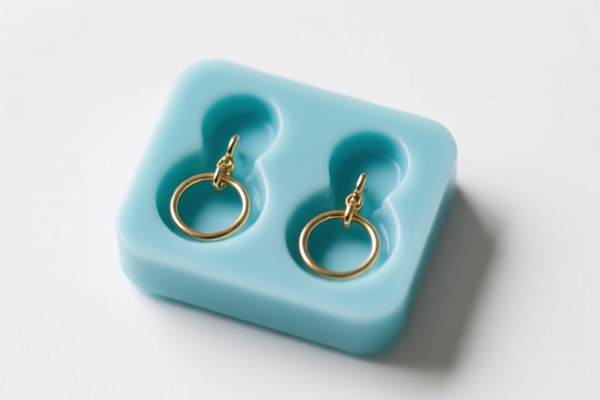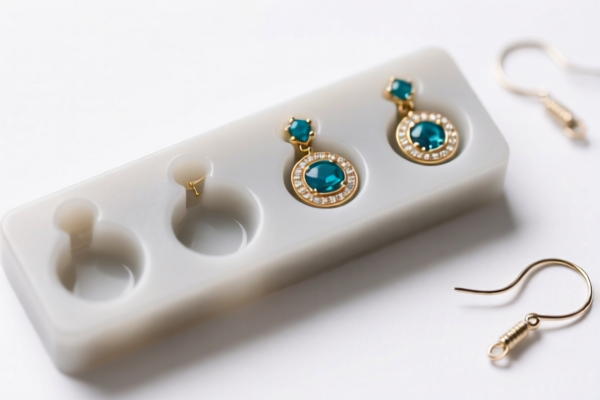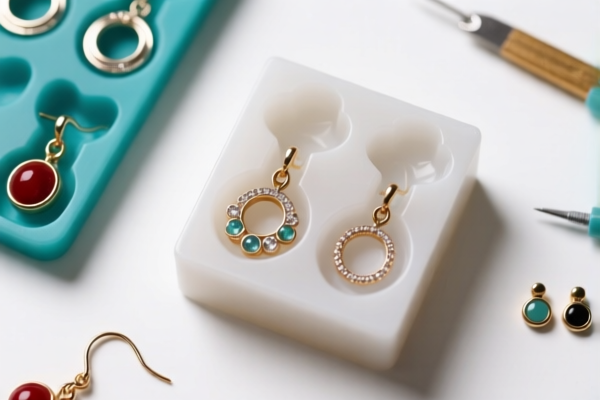| HS Code | Official Doc | Tariff Rate | Origin | Destination | Effective Date |
|---|---|---|---|---|---|
| 3926904000 | Doc | 32.8% | CN | US | 2025-05-12 |
| 3926909910 | Doc | 42.8% | CN | US | 2025-05-12 |
| 3901909000 | Doc | 61.5% | CN | US | 2025-05-12 |
| 3901905501 | Doc | 61.5% | CN | US | 2025-05-12 |
| 4205008000 | Doc | 55.0% | CN | US | 2025-05-12 |
| 4205006000 | Doc | 59.9% | CN | US | 2025-05-12 |
| 4201006000 | Doc | 57.8% | CN | US | 2025-05-12 |




DIY Earring Mold
A DIY earring mold is a tool used to create custom earrings through a casting or molding process, typically employing resin, clay, or metal. These molds allow for the replication of earring designs, enabling hobbyists and jewelry makers to produce unique pieces.
Material
DIY earring molds are commonly manufactured from the following materials:
- Silicone: The most prevalent material due to its flexibility, durability, and non-stick properties. Silicone molds are easy to demold and can withstand various casting materials. Platinum cure silicone is preferred for resin casting due to its low inhibition properties.
- Metal: Often used for stamping or forming earrings from metal clay or thin sheet metal. Metal molds provide greater precision and are suitable for repeated use.
- Plastic: Less common due to lower durability and potential for sticking, but can be used for simpler designs or temporary molds.
Purpose
The primary purpose of a DIY earring mold is to facilitate the creation of earrings without the need for complex sculpting or fabrication techniques. They allow for:
- Replication: Producing multiple identical earrings efficiently.
- Customization: Creating unique designs that are not readily available commercially.
- Experimentation: Testing different materials, colors, and embellishments.
- Cost-effectiveness: Reducing the cost of earring production compared to purchasing pre-made components.
Function
Earring molds function by providing a cavity in the desired earring shape. The process typically involves:
- Preparing the Casting Material: Mixing resin, clay, or metal according to the manufacturer’s instructions.
- Pouring/Pressing: Carefully pouring the liquid casting material into the mold cavity or pressing clay into the mold.
- Curing/Hardening: Allowing the casting material to cure or harden according to the material’s specifications. This may involve room temperature curing, baking, or UV light exposure.
- Demolding: Gently removing the cured earring from the mold.
- Finishing: Cleaning, sanding, polishing, and adding findings (earring hooks, jump rings) to complete the earrings.
Usage Scenarios
- Resin Jewelry Making: Silicone molds are extensively used for casting resin earrings with embedded flowers, glitter, or pigments.
- Polymer Clay Earrings: Molds help create intricate shapes and patterns with polymer clay, which can then be baked for hardening.
- Metal Clay Jewelry: Metal molds are used for shaping and texturing metal clay, which is then fired to create sterling silver or other metal earrings.
- Beading and Embellishment: Some molds are designed to create cavities for embedding beads, crystals, or other embellishments into resin or clay.
- DIY Craft Projects: Used in various craft projects for creating personalized earrings as gifts or for personal use.
Common Types
- Geometric Molds: Featuring shapes like triangles, squares, circles, and hexagons.
- Floral Molds: Designed to create earrings with flower shapes or cavities for embedding dried flowers.
- Character/Animal Molds: Featuring cartoon characters, animals, or other whimsical designs.
- Letter/Number Molds: Used for creating earrings with initials, numbers, or words.
- Abstract Molds: Featuring non-representational shapes and patterns.
- Multiple Cavity Molds: Containing multiple earring shapes in a single mold for efficient production.
- Ear Post Molds: Designed specifically for creating earrings with ear post settings.
- Silicone Sheet Molds: Flexible sheets with various designs that can be cut and used individually.
Based on the provided information, the declared goods "diy earring mold" can be classified as follows:
- 3926904000: Other articles of plastics and articles of other materials of headings 3901 to 3914: Other: Imitation gemstones. This HS code covers articles made of plastics or other materials, specifically categorized as imitation gemstones. While not directly earring molds, molds for creating imitation gemstones (which could be used in earrings) fall under this category.
- 39: Polymers of plastics, in primary forms.
- 26: Plastics and articles thereof.
- 90: Other articles of plastics and articles of other materials.
- 40: Imitation gemstones.
- 3926909910: Other articles of plastics and articles of other materials of headings 3901 to 3914: Other: Other Laboratory ware. If the mold is highly precise and used for resin casting or similar processes that could be considered laboratory applications, this code might apply.
- 39: Polymers of plastics, in primary forms.
- 26: Plastics and articles thereof.
- 90: Other articles of plastics and articles of other materials.
- 99: Other Laboratory ware.
- 4205008000: Other articles of leather or of composition leather: Other: Other: Other. If the mold is made of leather or composition leather, this HS code is applicable.
- 42: Articles of leather; saddlery and harness; travel goods, handbags and the like; articles of animal gut.
- 05: Other articles of leather or of composition leather.
- 00: Other.
- 80: Other.
Regarding HS code 3926904000, please note that the goods are categorized as "Imitation gemstones". It is important to verify the material composition of the mold to confirm if it aligns with this description.
According to the provided reference material, the HS code options related to 'diy earring mold' are limited, with only the following 3 found.
Customer Reviews
No reviews yet.